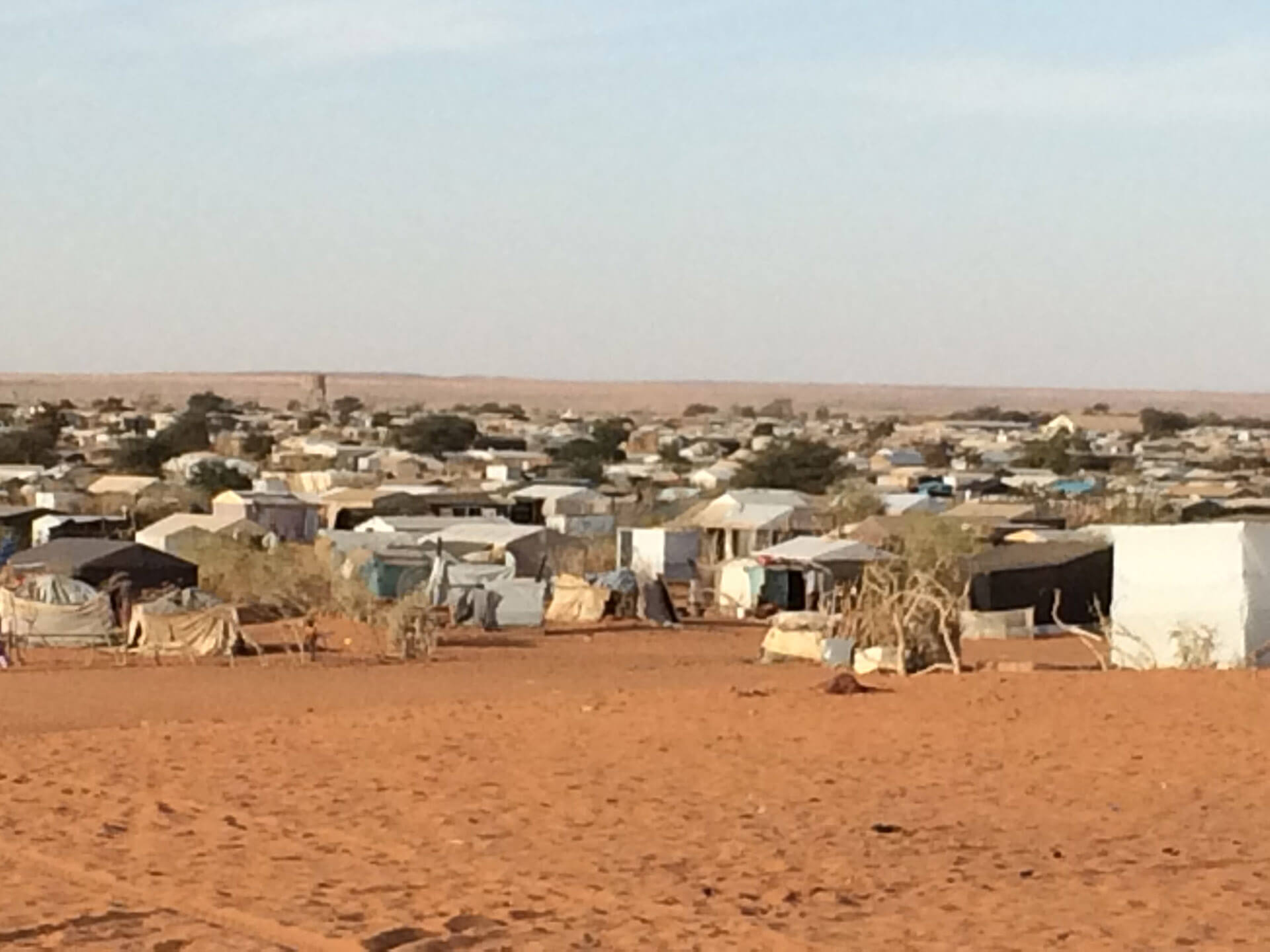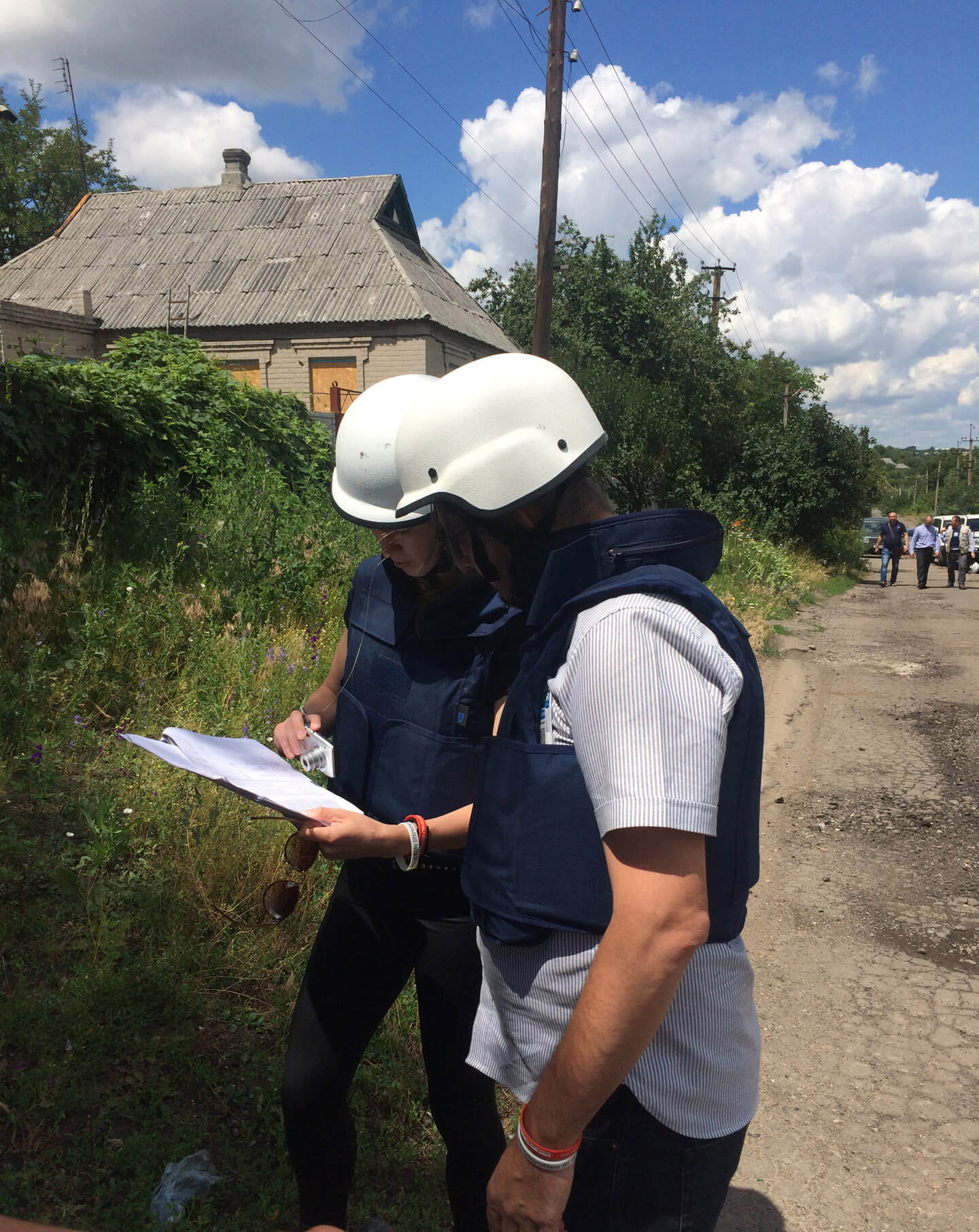I’ve been doing this kind of work for a while, mostly recovery and reconstruction, post-disaster and post-conflict. I know most of the people in the field from our annual coordination gatherings, and I got a call in January (2016), asking if I wanted to apply.
I had a similar role with World Vision International for the last four and a half years, heading up their shelter and infrastructure team for the humanitarian program, but this new role is different in many ways, with a different legal dimension, mandate, operational role. Whereas NGOs like World Vision are field-focused, working mostly at implementing projects, the UNHCR also acts as the counterpart to governments, working on complex international humanitarian law issues, rights, and obligations, especially in conflict areas. UNHCR is the mandated agency to work in shelter programs (and others) during and after conflict and with refugees–it’s a very complex relationship between the UN and the governments.
The international humanitarian system operates in clusters. For health emergencies, the WHO takes the leadership role; UNICEF covers education; and UNHCR has shelter, along with the Red Cross. UNHCR provides leadership and resources to aid refugees of conflict, from emergency shelter, construction of camps and also assistance outside camps in urban and rural areas, through to recovery and reconstruction. The Red Cross manages the needs of internally displaced persons in the wake of natural disaster; in those cases UNHCR will work closely with it but won’t take the lead.
I feel really lucky to get what is the lead role for the global team. Right now the focus is on Syria and the surrounding countries: Northern Iraq (Kurdistan), Jordan, Lebanon, Turkey, as well as programs in Central Africa, East Africa, Ukraine, and Myanmar. I’ll be on the ground whenever it’s needed, especially in the first year.
A lot of the problems I expect to deal with are about capacity, and the challenge of rapid response–getting resources to a location quickly. There is a hierarchy of national and regional teams; when disaster strikes they are the ones to respond first. We try to prioritize local recruitment–and more than ever, most of the UN staff are local–but in situations of conflict, local staff can’t always gain access to areas of need. A third party may be necessary and may be seen as more impartial than locals are. And if we can’t find the skills we need through local recruitment, we pair international skilled staff with local knowledge. We maintain a surge roster, experienced people whom we can call on for rapid response and quick deployment, or second staff from other country programs to meet short term need.
It’s been a process of synthesis to draw together 15 years of varied field experience into a cohesive body of work that makes sense for me, and for others when I talk about it. Being able to integrate it has been a major part of the Fellowship.
It’s valuable that I’m trained as an architect. Most of the people in the UN come from human rights or law, not so many from an architecture or design background. When dealing with issues of the built environment–a refugee camp or the reconstruction of a town after conflict–you need people who understand the linkages between the built environment and the social context. When you’re building things you are working with people in a very different way from when you’re working with policy. You need to bring part of that rigor to understanding people’s needs at all scales: household, street, neighborhood, city. Eighty percent of displaced people don’t live in camps, they live in existing communities. When displaced people are living among local people, there are the humanitarian issues as well as the local people’s needs, and you support social cohesion by addressing all of their issues.
Before I arrived I was questioning whether I wanted to continue along this path. When my mom and dad and sister were here they were awestruck at what we’d been given this year and that this opportunity exists. I’ve really felt lucky and grateful that I got to do the Fellowship.
New challenges
With UNHCR, the priority work will be in relation to the Syrian conflict, camps and other housing for the transient refugee population in neighboring countries, and permanent resettlement in host countries. This will be a big challenge as the conflict is ongoing and very complicated, where the parties to the conflict change alliances frequently. Plus, the combatants are part of a larger proxy war with international actors exerting influence. In the end the people fleeing conflict are the worst affected and in greatest need.
I’ll work with local teams, but the challenges are compounded, as each host country has different approaches to how the refugees are being dealt with and their access to services. Some populations are in camps, but the majority are mixed with the general populace. Assessing the complex needs and understanding how to reach the displaced populations, you must work with local governments and other humanitarian agencies. The lag time between getting assessment data and implementing projects means constantly considering your approaches so that you remain relevant. The projects are always implemented as part of a wider humanitarian approach, considering water, hygiene, food and nutrition, health, education, and microeconomic opportunities. Therefore bundling different disciplines together into a wider program is complicated but necessary across geographies and scales of implementation.
My next challenge is to learn French. At the UN management level you need 2 of the major languages.
Of course not all displaced will be refugees, and many will have access to skills, education and networks that provide opportunities. I believe there is huge scope in terms of preparedness to work with communities at risk by developing education and awareness, increasing agency and hopefully reducing the risk of vulnerability. There are close to 50 million refugees globally, more than any time since World War II, and the need for alternative approaches is critical.
One thing I’m not ready to leave behind is the joint initiative I’ve been working on with Rosetta S. Elkin of the Harvard Graduate School of Design Risk and Resilience concentration and Vincenzo Bollettino of the Harvard Humanitarian Initiative. The Retreat Rebuild Colloquium in April 2017 will address public health, the built environment, and humanitarian issues. Among the themes are the role of the architect in a rapidly changing profession and some options in the humanitarian world. This has been a recurring topic during my Loeb year, and I have had many conversations with faculty and students about the architecture profession and humanitarian work. There is a desperate and growing need in the humanitarian system for people to engage in recovery and reconstruction after conflict and disaster. Few other professions can take the holistic view that understands linkages between cities, people, buildings and the environment, particularly around urban systems. Some of the GSD students I’ve spoken with feel purposeful about aiming at humanitarian work, and I encourage this. For those who want to go into this area, the education system needs to be refocused around training to meet these and other pressing issues. We need architects who can go into the international humanitarian system and be ready to act as project managers, refugee camp planners, and team leaders with the skills to work across disciplines.
Much of architecture has been focused on high design and form-making and has not sufficiently addressed the current global needs of refugees and migration. I am going to need more architects with a social responsibility mission, and academia can do better at preparing people for that pathway.
A view of the Loeb year
While you’re at the GSD, what you think about first when approaching transition is returning to what you’ve come from. It takes some readjusting of the mind to visualize your future in a different place.
During the past year probably the greatest gift of the Loeb Fellowship was the chance to explore and connect. I’d lost touch with my other interests outside work and with my creative side, and I wanted to reconnect with that. I took glass blowing, painting, drawing and ceramics over the year, and this helped restore those interests and was also a lot of fun. I also worked on developing the academic side with my activities with the Harvard Humanitarian Initiative and the Kennedy School, courses on urbanization, equity, justice and risk and resilience. It’s been about trying to rebalance and rediscover a well rounded me. Once you’ve discovered different things about yourself you’re ready for the next step.
Another really great thing this year was developing leadership skills in a very different way from past management demands in the workplace. It’s funny being without a leader amongst the fellows; working within the group, sharing responsibilities, you discover things about yourself. Reflection gives you confidence about who you are, your interests and strengths, what’s worth working for, what needs to change. It has reenergized my commitment to humanitarian work.
I think there’s a lot of agency we have in creating a positive future for ourselves; I think this is a strength in me. My parents are very positive and that upbringing will influence you. I feel lucky: I’ve had a lot of travel, worked and lived in many countries, seen people in unfortunate circumstances. I have lots to give and can still have enough for myself.

